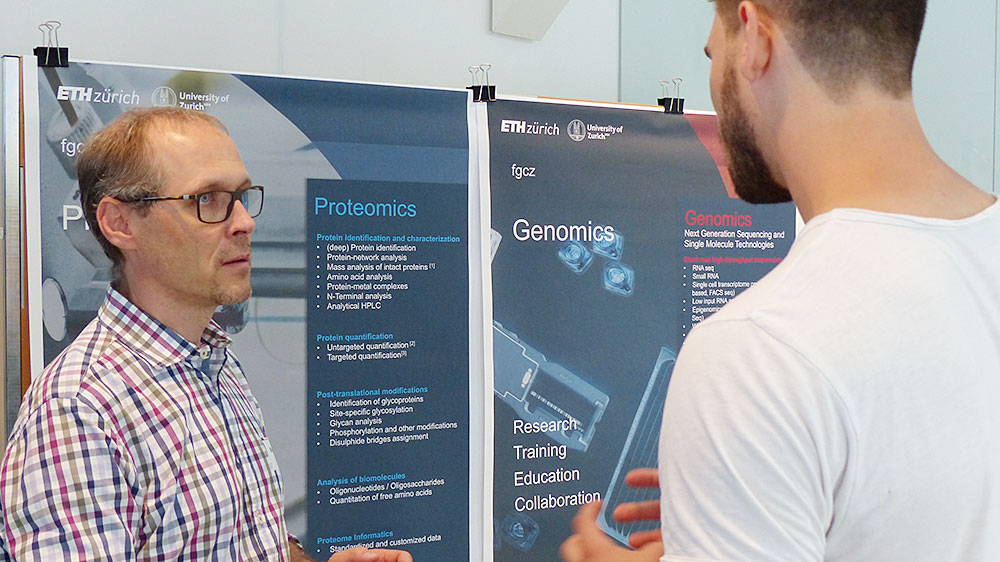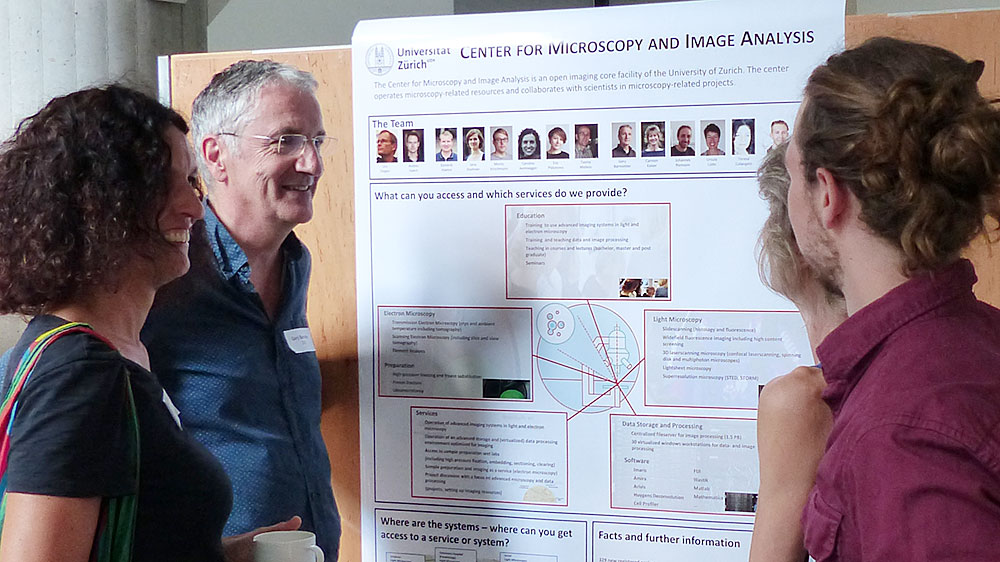In the Service of Research
Microscopes that can visualize the structure of a cell’s double-layered membrane, computers that can process 6,000 terabytes, and cell measurement instruments that can determine whether a cancer treatment is working. Devices like these are essential to performing research nowadays – but they’re also expensive, with some microscopes costing up to 10 million francs. What’s more, some of them are so complex that they can only be operated by specialists or after receiving extensive training.
This is why research institutes have started to establish central service units that provide services across all departments. In these service facilities, qualified staff carry out experiments and offer training that enables researchers to use the technology themselves.
Seven platforms
There are seven autonomously organized technology platforms at UZH. They work across faculties – in some cases cooperating with other institutions such as ETH Zurich – and are given preferential treatment when it comes to the allocation of research funds.
Last week, these platforms and three central facilities showcased their services on Core Day 2018, which featured presentations and a “marketplace” of research posters. The range of facilities was extremely varied, from the three-employee Protein Crystallization Center to the Functional Genomics Center Zurich with a staff of 51. The latter provides research and training in the area of omics technologies (genomics, proteomics and metabolomics).
Analyze and train
The Functional Genomics Center Zurich, the Cytometry Facility and the Center for Microscopy and Image Analysis are the three largest platforms. Together they count a total of 2,810 active users, launch 810 new projects and hold 45 training courses each year. All three platforms offer application possibilities in a number of research areas.
For example, cytometry, which is concerned with the measurement of cells, is a procedure that allows cells to be analyzed in liquids that rapidly flow through electric voltage or a light beam. The form, structure and/or color of the cells produce different effects from which a cell’s characteristics can be derived. Applications include the analysis of human samples, for example blood, sperm or brain fluid. But the technology is also used by limnologists, who can investigate interactions between bacteria and microbiological processes in water samples.
Another current example mentioned by Christina Ewald, who represented the Cytometry Facility on Core Day, is a study which investigated which drugs have proven effects in treating brain tumors. “This isn’t far removed from personalized, precision medicine,” says Ewald. The center provides specialist knowledge, theoretical and practical courses as well as a cell-sorting service at various sites of UZH and the University’s clinics.
Examining cells
The Center for Microscopy and Image Analysis’ (CMI) field of application is even more varied. The center’s main office is on Irchel Campus, but its employees work for all the life sciences. Employee Caroline Aemisegger explained how her team uses microscopes to examine living materials such as cells, organisms and proteins to detect neurodegenerative diseases, among other things.
“I stack 2D images of cell cores on top of each other until I can examine its structure as if it were 3D,” explains Johannes Riemann, another CMI employee. The center’s range of services has increased even more since the tissue clearing technique has allowed even opaque tissues to be turned transparent.
The CMI’s employees also provide training courses in which researchers learn to optimally prepare materials and operate the electron or light microscopes independently. In addition, the center’s services also cover the area of image analysis, for which it provides hard and software for image processing and statistical analysis.
Highly specialized applications
Even more specialized are the services of the Zurich Integrative Rodent Physiology (ZIRP), which analyzes rodent physiology; the Nanobody Service Facility (NSF), which produces and selects highly specific antibody fragments; the Viral Vector Facility (VVF), which provides viral vectors for pre-clinical applications; and the Center for Magnetic Resonance Imaging (MRZ).
The latter is located on the premises of the University Hospital of Psychiatry Zurich and the Department of Child and Adolescent Psychiatry, in a “charming little stable”, as Philipp Stämpfli put it during his presentation. This building houses the MRZ’s machines, which use imaging techniques to get a more precise and personalized picture of the clinical symptoms of patients.
And since all these facilities and researchers are working with an ever-increasing amount of data, the Service and Support for Science IT unit in UZH’s Information Technology office provides support in the form of advice, training and the right IT infrastructure – if need be also with the Piz Daint supercomputer in Lugano. Europe’s most powerful supercomputer can process upwards of 6,000 terabytes and has so far been able to handle any amount of data.

